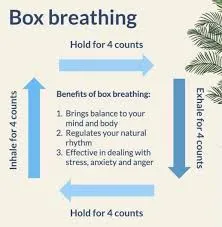
How to Improve Your Posture for Better Health
Good posture is often underestimated, but it plays a fundamental role in physical health, mental well-being, and overall quality of life. Improving your posture isn’t just about looking confident and professional; it has numerous benefits for your musculoskeletal system, cardiovascular health, and even your mental state. This article will walk you through what posture is, why it’s essential for your health, and practical steps you can take to improve it.
What is Posture?
Posture refers to the alignment of your body parts — including the head, shoulders, spine, hips, knees, and feet — in a way that requires the least amount of strain on muscles and ligaments. Good posture keeps the spine and surrounding muscles in their natural alignment, reducing stress and enhancing movement efficiency. In contrast, poor posture places undue strain on various body parts, potentially leading to chronic pain, muscle fatigue, and limited mobility.
Why is Good Posture Important for Health?
Maintaining proper posture is crucial for multiple aspects of health:
- Reduces Back and Neck Pain: Poor posture is a common contributor to back and neck pain. Slouching or hunching places strain on the spine, which can lead to discomfort and injury over time.
- Improves Breathing and Circulation: When your body is correctly aligned, your lungs have more space to expand, making breathing more efficient. Better oxygen intake and circulation improve energy levels and focus.
- Boosts Mental Well-being: Studies suggest that good posture may reduce stress and boost mood. When you sit or stand with confidence, you may feel more energized, which positively impacts mental well-being.
- Enhances Digestion: Slouching compresses your stomach, intestines, and other digestive organs. Over time, poor posture can contribute to digestive issues like acid reflux or constipation.
- Prevents Injuries and Muscle Fatigue: Proper posture evenly distributes body weight, helping to avoid unnecessary strain on muscles, ligaments, and joints.
Signs of Poor Posture
Recognizing the signs of poor posture is the first step toward improving it. Common indicators include:
- Slouched or rounded shoulders
- Forward head posture (often called “text neck”)
- An arched lower back or protruding belly
- Hunching or slumping, especially when seated
- Constant feeling of tension in the back, neck, or shoulders
Tips to Improve Your Posture for Better Health
1. Be Mindful of Your Posture
The foundation of good posture starts with awareness. Throughout the day, check in with your body. Notice how you sit, stand, and move. Make small adjustments to align your body. Try setting reminders on your phone to encourage posture check-ins until it becomes a habit.
2. Strengthen Core Muscles
A strong core is essential for good posture, as it supports your spine and helps maintain a neutral position. Some core-strengthening exercises to consider include:
- Planks: Strengthen the abdominal and back muscles.
- Bird-Dog: Engage the lower back and core muscles.
- Bridges: Target the glutes, hamstrings, and lower back.
Incorporating these exercises into your routine at least three times a week can help stabilize your core and make maintaining good posture easier.
3. Adjust Your Workspace
If you work at a desk for long hours, making ergonomic adjustments can prevent poor posture. Here are some tips:
- Set Your Screen at Eye Level: Position your computer screen at eye level to avoid craning your neck.
- Use an Adjustable Chair: Ensure that your chair supports your lower back and allows your feet to rest flat on the floor.
- Position Your Keyboard and Mouse: Keep your arms at a 90-degree angle, close to your body, to minimize strain on your wrists and shoulders.
Investing in ergonomic furniture may seem costly, but it can prevent the long-term health impacts associated with poor posture.
4. Practice Stretching and Flexibility Exercises
Flexibility exercises help maintain a full range of motion in the muscles and joints, which reduces the risk of postural strain. Try these stretches:
- Chest Stretch: Stand or sit with your hands clasped behind you, and gently pull your shoulders back.
- Neck Stretch: Tilt your head towards one shoulder and hold, then repeat on the other side.
- Hip Flexor Stretch: Kneel on one knee and push your hips forward slightly to stretch the hip flexors, which are often tight from prolonged sitting.
Make it a habit to stretch briefly every couple of hours, especially if you sit for long periods.
5. Wear Supportive Footwear
Footwear can significantly impact posture. High heels, for instance, can throw off your natural alignment, putting extra pressure on your knees, hips, and lower back. Opt for supportive shoes with adequate arch support to encourage a balanced stance. If your daily activities require prolonged standing or walking, proper footwear is particularly important for spinal alignment.
6. Try Posture-Correcting Exercises
There are specific exercises that target postural muscles, helping you develop habits for better alignment. These exercises include:
- Wall Angels: Stand with your back against a wall, arms at a 90-degree angle, and gently press your arms back toward the wall to activate your upper back muscles.
- Reverse Dumbbell Flyes: Strengthen the muscles of the upper back and shoulders, counteracting forward-leaning posture.
- Shoulder Blade Squeezes: Squeeze your shoulder blades together and hold for a few seconds, then release.
Incorporate these exercises into your workout routine to help counteract the forward head and rounded shoulder posture that often develops from sedentary habits.
7. Practice Good Posture When Sitting
Most people spend long hours sitting each day, whether at work, at home, or during commutes. To sit with proper posture:
- Sit Up Straight: Keep your back straight and avoid leaning forward.
- Use a Lumbar Support: Place a small pillow or rolled towel behind your lower back for support.
- Place Your Feet Flat on the Ground: Avoid crossing your legs, which can lead to hip misalignment.
Make a conscious effort to sit correctly, especially during prolonged periods, to support spinal health.
8. Incorporate Movement Breaks
Staying in one position for extended periods can strain muscles and joints. Taking short movement breaks every hour can help reset your posture. Try a few of these techniques:
- Stand and Stretch: Take a minute to stand and stretch your muscles.
- Walk Around: Moving around increases circulation, helping to relieve tension.
- Do Posture-Check Exercises: Use a few seconds to perform a simple shoulder roll or neck stretch.
Movement breaks encourage better posture by preventing stiffness and reducing the risk of postural fatigue.
9. Consider Posture Aids
If you struggle with maintaining posture, certain tools can provide support. For example:
- Posture Correctors: Wearable devices that gently remind you to sit or stand with proper alignment.
- Orthopedic Cushions: Designed to support your lower back and improve sitting posture.
Although posture aids can be helpful, they should be used as a supplement rather than a replacement for strengthening exercises.
10. Consult a Physical Therapist
If you experience chronic pain or find it challenging to maintain good posture, consulting a physical therapist can be beneficial. A therapist can assess your specific needs, identify postural imbalances, and provide targeted exercises to correct them. Personalized guidance can make a significant difference, especially if poor posture has already led to pain or injury.
The Road to Improved Posture and Better Health
Improving posture is a journey that requires consistent effort, awareness, and practice. By following the tips above, you can gradually strengthen your core, enhance flexibility, and develop habits that support proper alignment. In turn, these positive changes can lead to better physical health, mental well-being, and a greater quality of life. Start with small adjustments today, and your future self will thank you.



